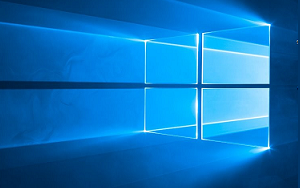Clearing the Safari cache on your iPhone can significantly improve browser performance, enhance privacy, and free up storage space. This in-depth guide provides a step-by-step approach to efficiently clear cache data, ensuring your device runs smoothly.
Introduction
In today's digital age, mobile browsing has become an integral part of our daily routine. Safari, being the default browser on iPhones, is used extensively by millions of users worldwide. However, frequent browsing can lead to the accumulation of cache data, which can slow down your device and compromise your privacy. Clearing the Safari cache on your iPhone is a crucial maintenance task that should be performed regularly. In this article, we'll explore the step-by-step process to clear Safari cache on your iPhone, along with the benefits and implications of doing so.
Understanding Safari Cache
Before diving into the steps, it's essential to understand what cache is and why it's stored:
- Definition: Cache is a collection of temporary data stored by your browser to speed up loading times for frequently visited websites.
- Purpose: It helps in reducing the need to download the same data repeatedly, which can enhance browsing speed and save data usage.
However, over time, cache can accumulate and take up significant storage space, leading to slower browser performance.
Benefits of Clearing Safari Cache
Clearing the cache on your iPhone's Safari browser offers several advantages:
- Improved Performance: Removing old cache files can help improve the speed and responsiveness of your browser.
- Enhanced Privacy: Clearing cache data can remove stored login information and reduce the risk of privacy breaches.
- Increased Storage Space: Freeing up cache can reclaim valuable storage space on your iPhone, allowing you to install more apps or store more media.
Step-by-Step Guide to Clear Safari Cache on iPhone
Follow these detailed steps to clear the Safari cache on your iPhone:
1. Open Settings
Start by unlocking your iPhone and navigating to the Settings app, represented by a grey gear icon.
2. Access Safari Settings
Scroll down in the Settings menu and tap on Safari to open the browser's settings.
3. Clear History and Website Data
In the Safari settings, locate and tap Clear History and Website Data. A prompt will appear, asking for confirmation.
4. Confirm Your Action
Tap Clear History and Data in the pop-up confirmation box. This action will remove all browsing history, cookies, and cached data from Safari.
5. Advanced Cache Clearing (Optional)
If you want a more thorough cleaning, you can clear the cache for individual websites:
- In Safari settings, tap Advanced.
- Select Website Data.
- Here, you'll see a list of websites and the amount of data stored by each. Tap Edit in the top-right corner.
- Tap the red minus icon next to each site you wish to remove, or tap Remove All Website Data for a complete clear-out.
Verifying Cache Clearance
After clearing the cache, it's wise to verify the process was successful:
- Open the Safari app and visit a frequently accessed website. You should notice the page takes slightly longer to load, indicating the cache has been cleared.
- Check available storage space to confirm an increase, reflecting the freed cache space.
Considerations and Implications
While clearing the cache is beneficial, it's important to consider:
- Loss of Saved Data: Clearing cache will remove saved login information and other website data, requiring you to log in again.
- Temporary Slowdown: Initial load times for frequently visited sites may be slower as data is re-cached.
Conclusion
Regularly clearing the Safari cache on your iPhone not only enhances your device's performance but also safeguards your privacy and optimizes storage space. By following the steps outlined in this guide, you can efficiently manage your browser's data and ensure a seamless browsing experience. Make it a habit to clear your cache periodically to maintain your iPhone's optimal performance.







